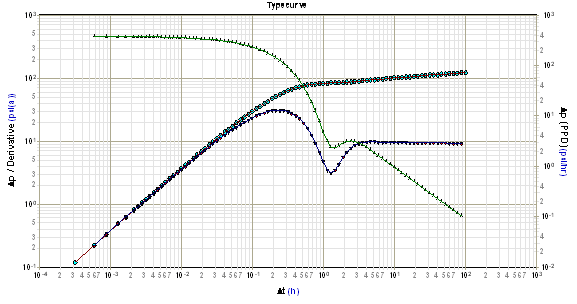Primary Pressure Derivative
In order to properly interpret pressure data for WellTest analysis, it is important to be able to differentiate between reservoir and wellbore effects. The primary pressure derivative (PPD) was developed to identify wellbore effects within a pressure response, so they can be separated from reservoir effects.
Some examples of wellbore effects:
- Phase redistribution due to liquid influx
- Gauge malfunction
- Wellbore cleanup operations
- Geo-tidal or seismic effects
The primary pressure derivative is defined as:
Note that this differs from the typical definition of the derivative:
By definition, the PPD for any type of reservoir flow regime will always either be a constant or decreasing. Thus, any non-reservoir or wellbore effects will appear as an increase in the PPD as shown in the following plot.

| Note: | In this example, the increase in PPD was due to phase redistribution in the wellbore. |